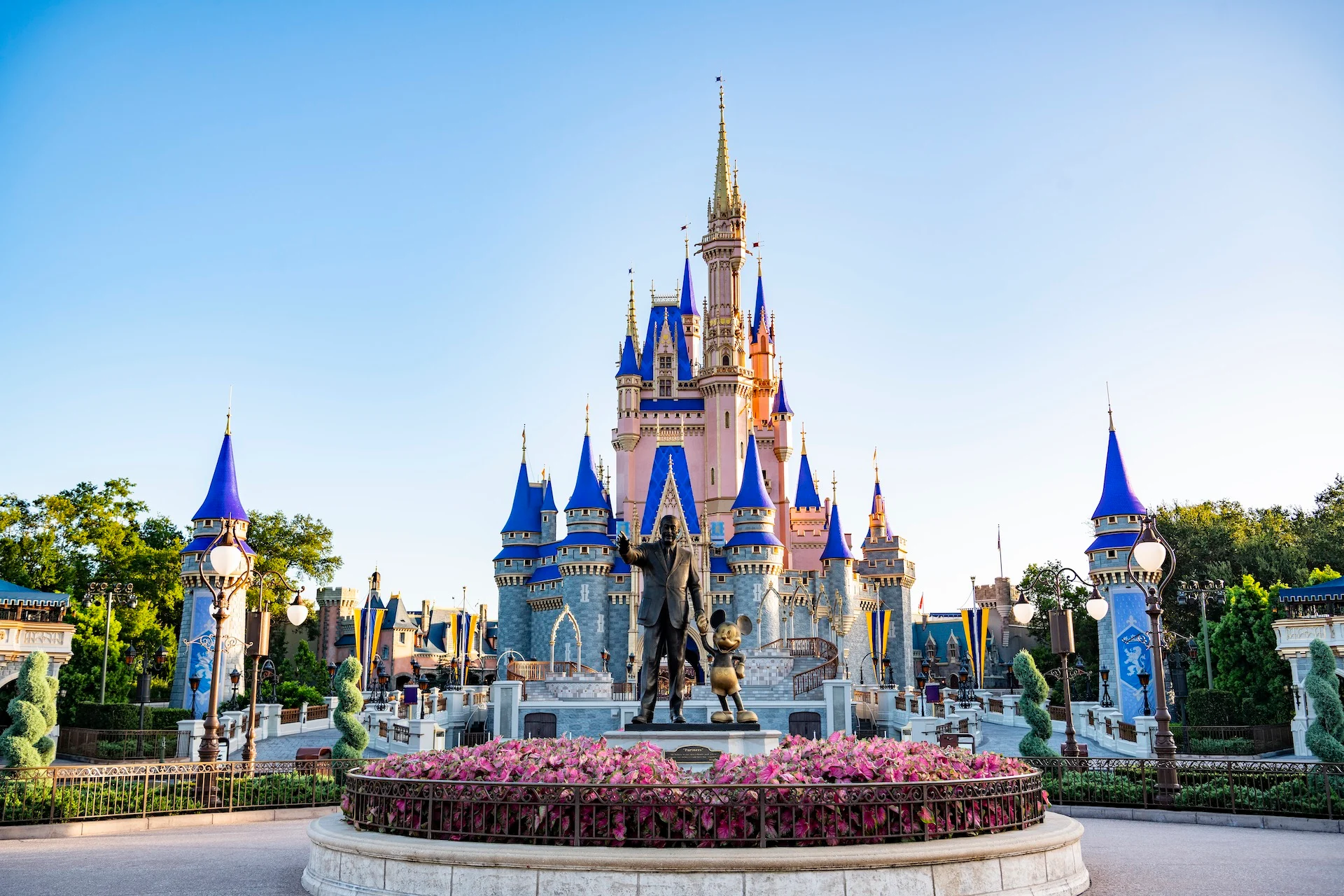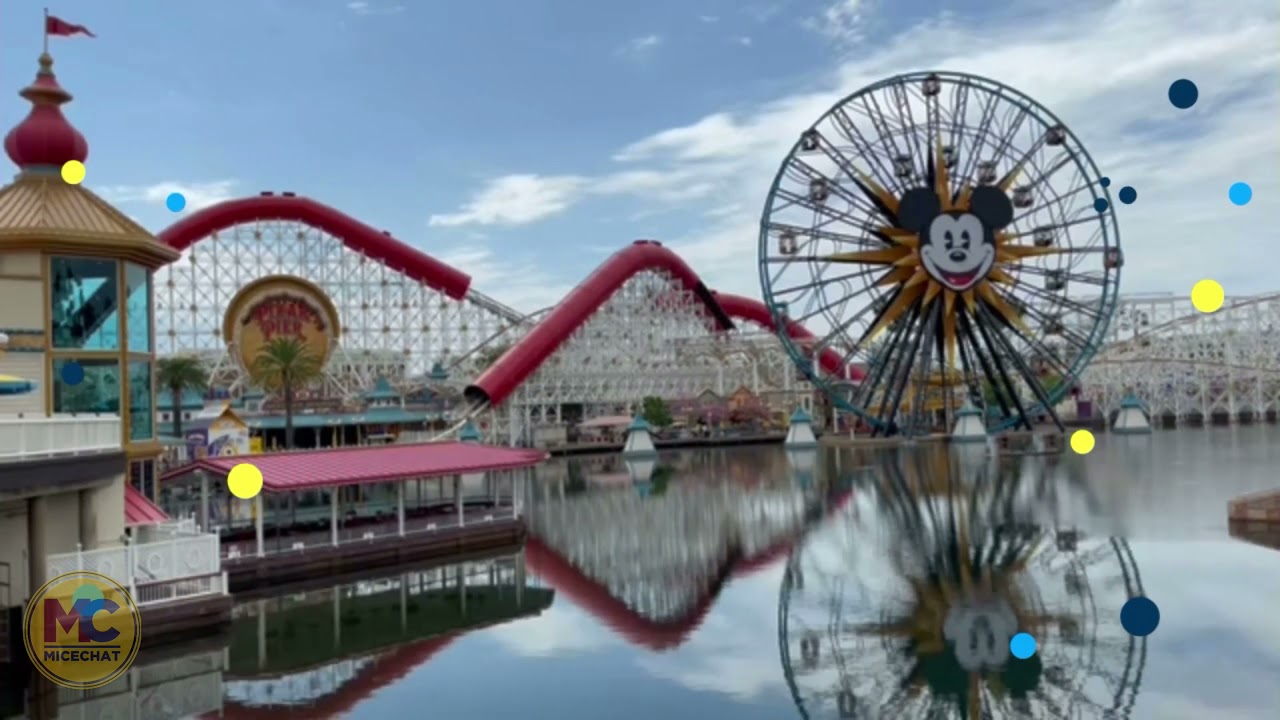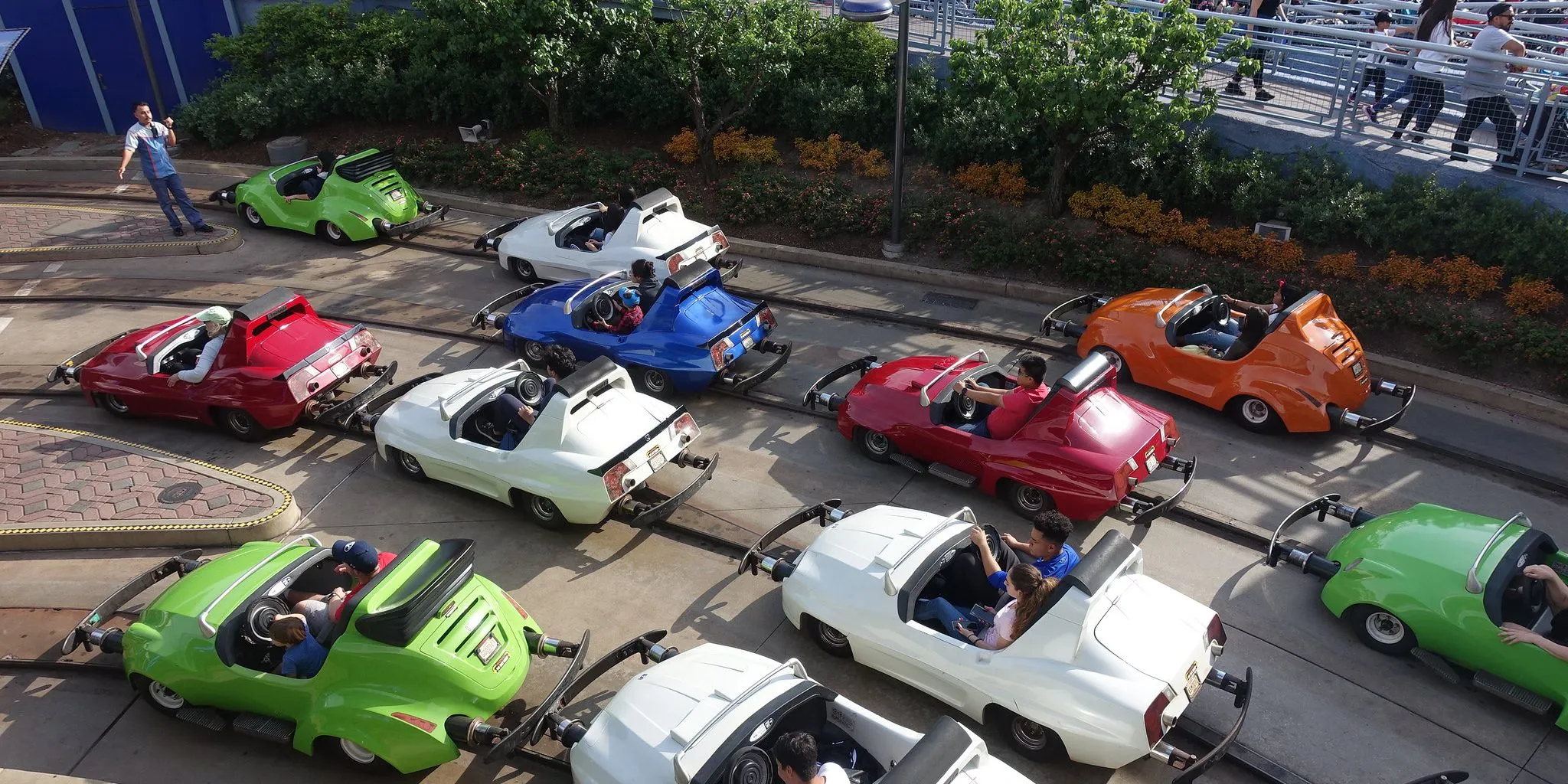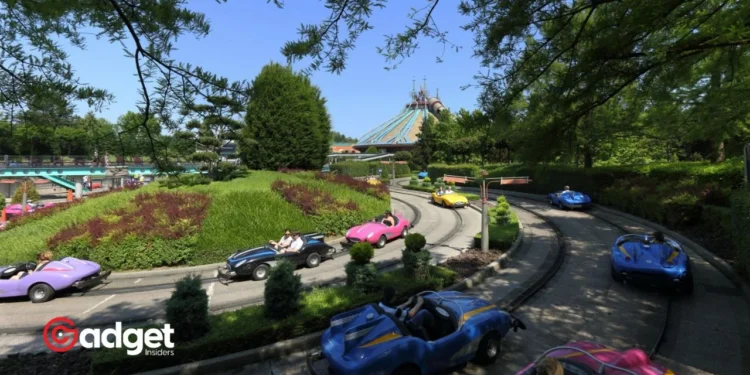Nestled in the heart of Anaheim, California, Disneyland’s iconic ‘Autopia’ ride has captured the imaginations of visitors for decades with its miniature cars cruising along a scenic roadway. However, recent developments have placed this beloved attraction in the spotlight, not for its nostalgic charm, but for a burgeoning controversy surrounding its environmental impact.
As the world pivots towards sustainability, a growing chorus of activists and advocates are challenging Disney to reimagine Autopia’s future through a greener lens.
The ride, which currently utilizes four-stroke gas-powered engines supplied by Honda, is at a crossroads. Disney’s announcement earlier in April hinted at an ambitious plan to electrify the Autopia experience.
Yet, the details provided were vague, described by Electrek as ‘noncommittal,’ which has only fueled the fervor of environmental proponents.

The Electrification Debate: Full-Electric vs. Hybrid Models
The concept of electrification, within the automotive industry, encompasses a spectrum of technologies ranging from fully electric vehicles (EVs) to hybrids that combine gas engines with electric propulsion.
The ambiguity in Disney’s statement—mentioning an electrification that “could mean many things”—has sparked a debate about the potential directions Autopia could take.
Activists are advocating for a shift to fully electric vehicles, aligning with global trends and environmental goals.
This stance is supported by the broad transition in the U.S. towards electric vehicles, with major automakers like Tesla and Ford embracing battery-powered technology that eliminates reliance on fossil fuels.

The possibility that Disney might opt for hybrid vehicles—merely a marginal improvement over the current model—has not sat well with environmental groups.
They argue that a hybrid approach would undermine the futuristic ethos of Tomorrowland, where Autopia is located, and fail to represent a genuine commitment to combating climate change.
Disney's decision for Autopia's electrification gets pressured.https://t.co/ZMTOv8HfjZ
— Tech Times (@TechTimes_News) April 19, 2024
Why Now? The Timing and Urgency of the Call for Change
The pressure on Disney to accelerate its electrification plans is more than a demand for technological upgrades—it is a call to action resonant with the times. As the planet grapples with the escalating impacts of climate change, every sector is being scrutinized for its environmental footprint.
For Disneyland, a pioneer in theme park entertainment, the move towards a fully electric Autopia is seen as a litmus test for the company’s dedication to sustainable practices. Moreover, the advocacy for immediate action is driven by a recognition that slow transitions may no longer be sufficient in the face of urgent environmental challenges.
Activists are pushing for Disney to set a precedent in the entertainment industry, signaling that substantial measures can be taken now, not just in the distant future.

Disneyland: What Lies Ahead for Autopia?
As discussions continue and public anticipation builds, the future of Autopia remains uncertain. What is clear, however, is the significant role public opinion and activist pressure play in shaping corporate decisions in the environmental age.
Disney’s response to this controversy will not only decide the fate of a beloved ride but also demonstrate the company’s broader commitment to environmental stewardship.
In the coming months, as Disney potentially unveils more concrete plans, the eyes of the world—be they eager children or fervent environmentalists—will be watching closely, hopeful for a glimpse of Tomorrowland’s promise delivered in the present day.
This shift towards a fully electric Autopia could indeed mark a significant milestone in the journey toward a sustainable future, making it a true ride of tomorrow.










